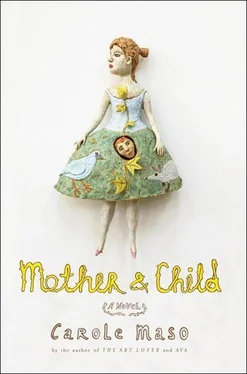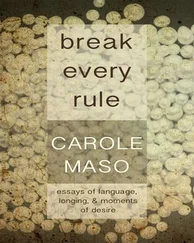She had picked berries there forever, it seemed. She thought of her childhood now: a beautiful blue mountain seen through the parted black curtains. Lars, Anders, Ingmar, Sven, and baby Inga. She loved the sound as the berries fell — dull and sweet into the bucket.
AFTER THE OTHERS had left she and the baby remained behind. She wanted to swaddle her, here among the blueberry bushes, to protect her, her little sister. It was getting late.
Each beat of the heart is triggered by a surge of calcium ions that cause millions of overlapping filaments in a heart cell to pull against each other and contract. What would happen, she wonders, if white dwarfs — small, dense, dying stars, emitting axions, could attach their luminescence to stricken cells? What a beautiful world that would be, the mother thought, and bathed in moonlight and still holding the baby, she fell asleep.
SHE STOOD HIGH, high up atop those towers now and looked out. It was one of her favorite spots in the world. When the mother was pregnant with the child she would often come and admire the world which was so blue and so wide. She was tired, having come directly from the night shift, but the view always soothed, and the height.

THE MOTHER UNDERSTOOD more than most about the ways that people got sick and then got better, or got sick and then continued to get more sick, because of course she had been a nurse. In the neo-natal unit where the mother was often stationed, there were always many blue palm-of-the-hand babies to nurse.
Sometimes the child wished they could keep one of those babies, but she worried that it would need a lot of attention and she would lose her mother to it and she might end up hating the little palm-of-the-hand baby who needed only love. The child was so lonely some days that even a little sick palm-of-the-hand baby would do. She didn’t think the mother could take care of two children anyway, though it would be nice to have a little company. She would make the baby little dolls out of hollyhocks. She would make a tiny doll bed out of a walnut and some straw.
If the baby got sick, the mother would know what to do, how to wrap it up, and if it stopped breathing and turned blue, she could always put it under grow lights on stainless steel trays where it could be warmed, and the mother would breathe on it for extra protection and she would make it a tent out of her hair like the tent for Aunt Inga.
THE BOY IN Room 11 had been the only child of the three to survive the operation. Even though they had had wheelchair races in the halls in the days before, the other two children had died. When the boy who survived got home and was well on his way to recovery, he said, now I must live for three people, and an unimaginable darkness entered him.
The Boy in Room 11 was always a fighter, his mother said, but since having his chest opened and the blood field exposed to air, something had changed. He lived now in constant terror of invasions and contagions: attackers, burglars, rapists — those who might violate, dismember, or take something away.
After the surgery, the mother had handed the boy a glass hammer. She wondered now how things might have turned out if instead of a hammer she had handed him a sapling; instead of a sword, she had handed him a raft; instead of a stone — a pear, or a guitar, or a thread.
NO ONE COULD tolerate the girl in the newspaper’s death from an undiagnosed, treatable form of diabetes after her parents chose to pray for her rather than take her to the doctor. There was too little insulin in her body, the autopsy said, but when opened up, all that could be seen was that she was overflowing with prayer. The prayers could be examined and dissected, but the God had already exited the body, leaving behind the wreckage. After the autopsy, the child’s sweetened organs were placed in a glass jar as a lesson for all.
When the girl in the newspaper at last finds her way out of the jar, she is miniscule, a fetus in fact, but all her organs are back, and she crawls to the best of her ability to her parents and nestles in the crook of her father’s arm awhile, and then moves back to her mother where it had all begun, and burrows herself into the porch of her ear.
Who’s there? the mother whispers.
At the Spiegelpalais, a little master of ceremonies appears from beneath a tent flap: once I saw a deer no more than twelve inches tall emerge from underneath a rhubarb leaf, somewhere in the Andes, and I caught it and brought it back for you to see today here on display! And he places the tiny deer on a little amber block, said to be a million years old.
The little master is lonely even now, surrounded by Atlas the Dwarf, Quasimodo, the Half Man — Half Woman, and the Bearded Lady. He’s come now to fetch the little fetus girl, the child says.
Who’s there?
The praying mother feels more and more as if she is being called, but by whom she does not know. She experiences a strange somber sound in her left ear — a plaintive sound that no matter what will not leave her now. Those who remember the girl in the jar, and the mother standing over her, look on now with a special pity reserved for a certain elevated category of tragedy. Who’s there?
The sweetened fetus falls into unconsciousness. The mother bows her head.
DOWN THE HALL they were dislocating the football playing boy’s hip in order to shave the bone, which was growing like a tree inside him. But the muscles of a boy who plays football are strong, and so are the bones, and it took a long time to pry the bone from its socket. When they were finished prying and shaving, they put big screws in to hold the hip together.
IN ROOM 13 a man had been diagnosed with a condition characterized by periods of irresistible sleep, and more and more, the irresistible sleep overcomes the man. Sleep-induced paralysis makes it impossible for him to move. Frozen, he awaits reanimation. Sometimes the man is not 100 percent asleep, but somewhere in between. Strong emotion makes the man’s body go still — they call it the Stillness — and at this time, he is both somewhat awake and somewhat asleep.
The part of the man’s brain that maintains wakefulness is now being stimulated in the room adjacent to where another man is shrinking into a boy. When the legs turn blue, she will know it is almost over for him. The mother tries calling her friend the Blue Man now in an attempt to prepare herself.
Around almost every corner whole lives, hanging in abeyance, await transformation.
A powerful sedative known as the date elixir is being administered to the man in Room 13. Among daters it is known to cause dates to become drowsy and consent to a variety of acts they might not otherwise.
For reasons unknown, the date elixir seems to revive the man in Room 13, which is the exact reverse of what it does for the dates. Beside him, in the chamber, a herd of anesthetized women slumber, but not the formerly sleeping man, who steps blithely, no one knows why, over them.
The mother has heard that in the case of the Seven Sleeping Sisters, seven single-cell parasites entered their bodies, and when these bodies encountered the Sleeping Sickness parasites, the single sleeping cells would change shape, and then change shape again, so they were in disguise and the sisters’ bodies could never recognize them. The Seven Sleeping Sisters slept soundly now in the Spiegelpalais, along with the dreamers in the Blue Ward, where those who are blue due to the smoke inhalation are kept.
As the mother has always maintained, there are any number of miracles that have always happened, are happening now, and will continue to happen in the hospital. It was what drew her to it in the first place.
Читать дальше













